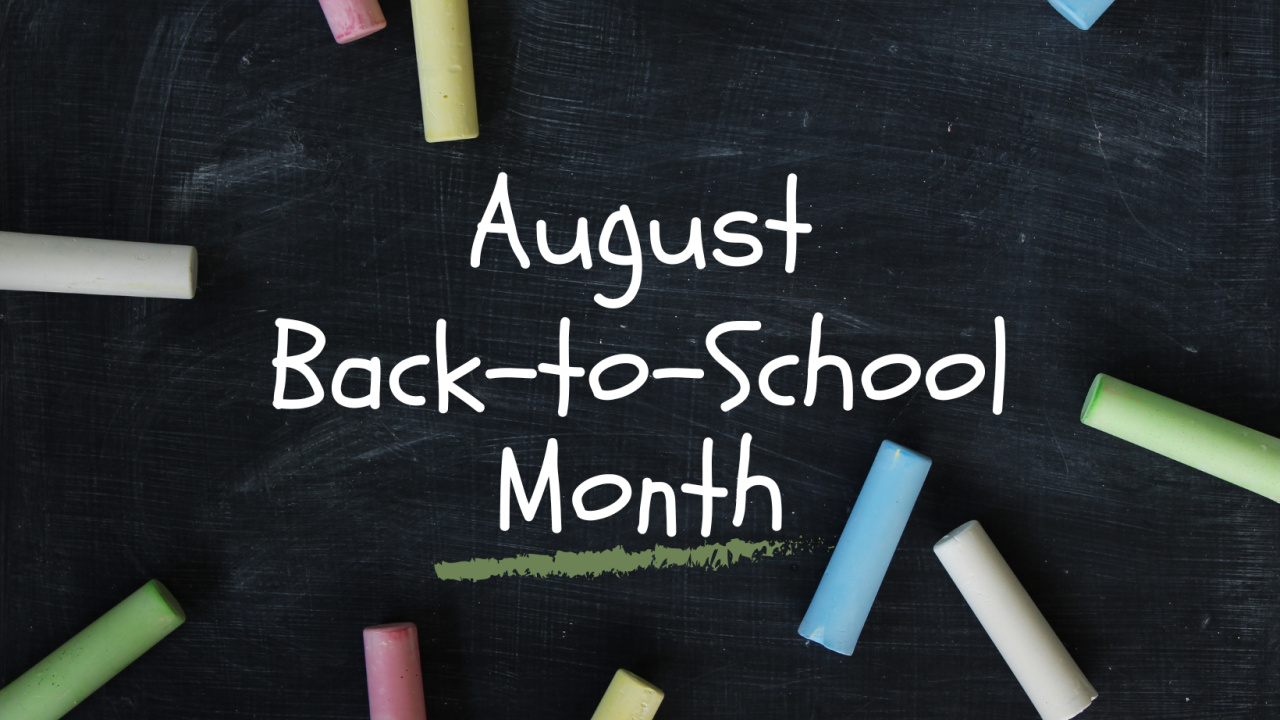
Back-to-School Month
Centering inquiry, equity, and literacy in the classroom
Quick Summary
- This blog provides a menu of back-to-school planning and lesson design resources
It’s August. You know what that means. Give me all the post-its, paper clips, crisp tabs, and new stickers. Nothing brings me the same excitement as flipping through a freshly-opened planner. Okay, maybe the local office supply store is just my thing, but I have a sneaking suspicion that I’m not the only one that loves a good back-to-school sale. In the spirit of new beginnings, I want to bring your attention to new resources for this upcoming school year. These include lesson-planning tools, classroom-ready materials, literacy strategies, and innovative curricular resources that foster inquiry and culturally-responsive teaching.
□ What is your year-long question? The UCB History-Social Science Project developed guidance to support flexible and inquiry-based lesson design supported by four themes: community building, reimagining instruction, pedagogical decision-making, and making history matter. along with resources to inspire and inform your instruction this year. The UCBHSSP also created a course planning worksheet using backwards design to help you frame the important questions and themes that your students find throughout the year. You can find more resources for backward design on this Strategies Database.
□ We archived our Monthly Highlights from 2021-2022 so you can access and plan in advance the curated lessons, books, blogs, and resources according to themes. Though these resources are organized thematically, we think these resources will help you incorporate Latinx history, Black History, LGBT+ history, AAPI History, and more in the classroom throughout the year. We will continue to bring you new content and support with Monthly Highlights throughout the year!
□ Toward that end, Asian American and Pacific Islander Changemakers, is another important teaching resource that Associate Director, Tuyen Tran, recently created. It comprises 27 biographical accounts of individual contributions to US History, primary source images, historical context, and links for further knowledge.
□ The Lost LA Curriculum presents culturally-relevant teaching materials centered on local history. Navigate lessons by topic, watch the documentaries, download the PDFs of lessons and classroom activities and find related articles. The UCLA History-Geography Project collaborated on the Lost LA Curriculum Project to align local stories and materials with California's history-social science instructional framework and state educational standards.
□ The UCB History-Social Science Project developed Global History Resources (in collaboration with The International and Area National Resource Centers at UC Berkeley) to help educators prepare students to understand cross-regional and thematic elements in global history. Designed for 6th, 7th, and 10th-grade classrooms, these resources consist of model lessons, course guidance, webinars, and more. For example, this tenth grade lesson about the Khmer Rouge helps teachers tackle difficult subjects and helps student understand the concept of genocide. This seventh grade course guidance scaffolds students’ understanding of the concept of interconnection: personal, community, regional, hemispheric, and global.
□ Have you taken a look at our Environmental Literacy Resources for History-Social Science section of our website? We’ve compiled curriculum (primary source sets, Current Context series, and worksheets), webinars, and other resources that help investigate the past and to build an environmentally sustainable and just future.
□ Are you a new or substitute teacher? Check out these new micro-learning videos! Teaching is hard. We helped develop this collection of microlearning modules to support substitute teachers, paraeducators, and non-certificated instructional staff in the classroom. In this video, Kate Bowen tells us how to use the "WOW (Word of the Week)" activity to support inquiry and creativity in learning new vocabulary and developing their writing skills.
□ Researched and annotated by Wendy Rouse, PhD in collaboration with the History Project at UC Davis, the LGBTQ History Through Primary Sources are designed for use in the K-12 classroom throughout the year. Each of the nine inquiry sets includes historical context, focus questions, further readings, and a plethora of primary sources to help you bring LGBTQ voices and experiences into your classroom.
□ The UC Irvine History Project developed reading strategies for textual and visual primary source analysis. Additionally, the 6 C’s of Primary Source Analysis offers a strategy for analyzing primary sources in multiple modalities.
□ This CHSSP Writing Guide helps teachers and students with the nuts and bolts of writing a history paper. It provides clear explanations for creating an argument, providing evidence, developing an analysis, and writing with clarity. For a more concise guide in check-list form, take a look at this Student-Friendly Writing Guide.
□ A discussion about evidence and literacy would be incomplete without a discussion on Media Literacy. This compilation of Media Literacy Resources includes documents, videos, and other resources to help students sift fact from fiction. You can also visit the Media Literacy Collaborative information on upcoming workshops, resources, and recorded lessons. The UC Irvine History Project and UC Santa Cruz History and Civics Project are leaders in the Media Literacy Collaborative.
I hope you find this list to offer fresh content, culturally-relevant teaching practices, and inquiry-based literacy support. You might have noticed that I didn’t number this list. It feels too good to take out the favorite gel-roller pen and check these off. You’re welcome. Cheers to the new school year!
